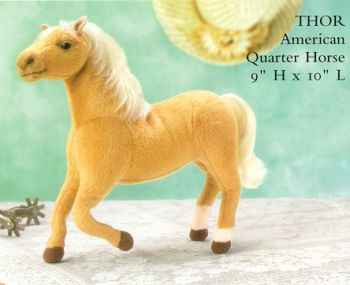|
|
The rider must master six distinct skills as she or he develops
an independent seat.
Communicating by the Seat of your Pants
by Faith Meredith
Sometimes a super horse appears at the events where
our instructors are showing that really catches my eye. He is
already such a nice mover or I can see that he has the potential
for three good gaits as he progresses. The following year,
however, I might not even recognize the same horse much less tag
him as a rising star. His flowing gaits have become short and
choppy. His soft jaw and relaxed back are now clamped and tight.
Instead of moving forward in his training, he has deteriorated.
When a setback like this happens, the reason is often that his
rider does not have an independent seat.
Developing a truly independent seat is the ultimate goal for a
rider. It is not about looking pretty on the horse. It is about
being in the right position with the right control over your own
body in order to be able to communicate clearly and logically
with the horse. If your horse feels the bit move in his mouth, it
should be because you are deliberately asking him for a specific
shape or a cadence or a degree of collection, not because you
have momentarily lost your balance or have become tense somewhere
in your body.
Obviously, if you are bouncing around on the horse’s back or
grabbing at his mouth in order to keep your balance, that “noise”
is what he is going to listen to. If the way you are sitting or
moving on his back creates pain or discomfort for the horse, then
any communication is gone. Without an independent seat, it is
impossible to properly influence the horse’s mind and body in
order to train it for any higher level equestrian sport from
dressage to eventing or cutting or reining.
The rider must master six distinct skills as she or he develops
an independent seat. These skills have to be mastered in order
because each builds on the ones previously mastered to create a
solid foundation like the trunk of a tree. In fact, we call it
the riding tree. With a firm base, the rider can confidently
branch out into any higher level equestrian sport. If the rider
tries to branch out without that solid trunk beneath her,
however, the branch is eventually going to break or maybe the
whole tree will topple.
The six skills to be mastered are, in order:
relaxation (both physical and mental)
balance
following the motion of the horse
learning to apply the aids
learning to coordinate the aids
using the aids to influence the horse
It takes many hours of riding on many different types of horses
to develop a truly independent seat. Even students in an
intensive riding program like the one here at Meredith Manor who
have access to a great variety of horses may spend their first
year mastering just the first three stages of the riding tree.
Every student progresses through each stage at a different pace
depending on his or her own physique, temperament, and previous
riding experience. Sometimes a student masters one level very
quickly and easily only to find herself on a plateau at the next
level for weeks or even months. It doesn’t really matter as long
as she strives toward that ultimate goal of an independent seat.
Once a student achieves that, he or she can move confidently into
any riding discipline on any horse.
One of the big problems in the horse industry is the fact that
many amateur riders and even some professionals do not develop
the independent seat that they need to correctly influence a
horse. When that happens, their limitations end up limiting the
horse.
Now every horse has his limits, both physical and mental. But
those limitations should be determined by the horse’s
conformation or his athletic ability or his temperament, not by
the rider’s inability to stay in balance over the horse or to
follow the motion or to coordinate the application and timing and
degree of a set of aids.
I have seen even professional trainers trying to ride upper level
dressage horses who cannot follow the horse’s motion at an
extended trot. The minute that happens, they lose communication
with the horse. They cannot communicate with the horse and
influence one stride and the next and the next because they
cannot follow the motion. Their “trunk” is weak. The same thing
would happen with a reining horse rider trying to set their horse
up for a spin or a rollback. If the rider is not relaxed,
balanced and following the horse’s motion as the horse runs down
the arena, he will not be able to coordinate the aids at the end
of the slide to communicate with the horse and influence the
smooth transition to the next movement he wants the horse to
perform.
Having a truly independent seat means mastering all six skills at
all three gaits on any kind of horse. As you look along the trunk
of the riding tree and evaluate your own progress, you may find
that you have some of these skills on every horse but you only
have others on some horses at some gaits. Don’t be discouraged.
It takes a lot of hours in the saddle, a lot of mental
concentration, a lot of small corrections of a lot of mistakes, a
lot of feedback from your horses and your instructors to develop
an independent seat. But what a high when you achieve it! Just
keep riding.
©
Faith Meredith has successfully trained and competed horses
through FEI levels of dressage. She currently coaches riders in
dressage, reining, and eventing at
http://www.meredithmanor.com/
Plush Stuffed Horses will Sweep you away with their Charm

|